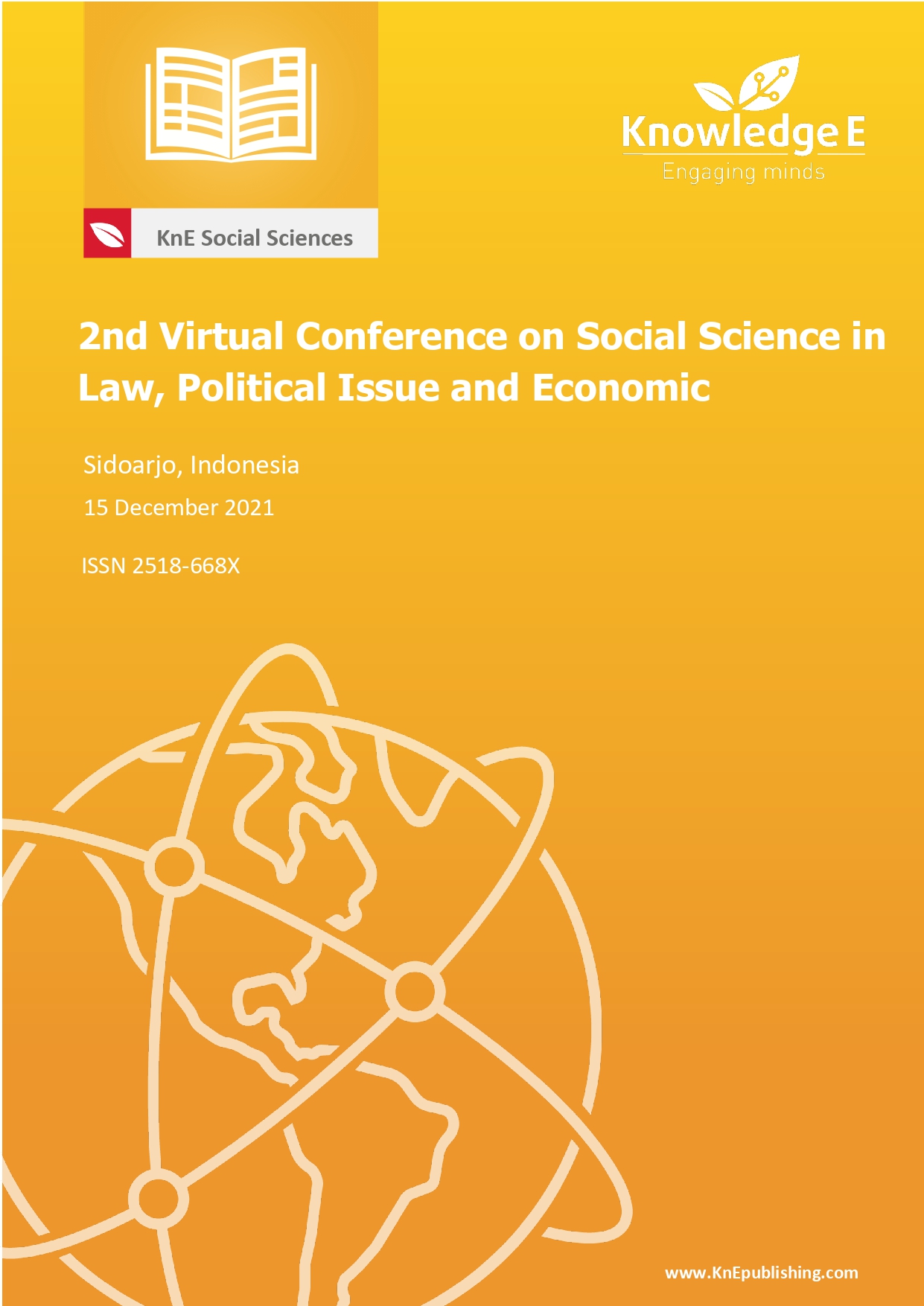Resources and Capabilities of Social Enterprises in Creating Resilience Toward Sustainability
DOI:
https://doi.org/10.18502/kss.v7i12.11545Abstract
This study explored the effect of education, training, and competency levels on job performance with position promotion as an intervening variable at the Bank Jatim Sidoarjo Branch Office. The authors used a quantitative design with hypothesis testing and a questionnaire as the analytical tool. Of the 250 employees of Bank Jatim Sidoarjo Branch Office, they selected a sample of 71 respondents. Study variables were measured using a Likert scale, and data were analyzed through path analysis and t-statistic test using the software SmartPLS for Windows v.3. The results showed that (i) the education level; (ii) training; (iii) competence; (iv) education level with promotion as an intervening variable; (v) training with promotion as an intervening variable; (vi) competence with promotion as an intervening variable; and (vii) position promotion all have a significant effect on job performance.
Keywords: education level, training, competence, job performance, position promotion
References
Dacin MT, Dacin PA, Tracey P. Social entrepreneurship: A critique and future directions. Organization Science. 2011;22:1203-13.
Santos FM. A positive theory of social entrepreneurship. Journal of Business Ethics 2012;111:335-51.
Mair J, Marti I. Social entrepreneurship: What are we talking about? A framework for future research. Barcelona: IESE Research Papers D/546; 2004.
Rahdari A, Sepasi S, Moradi M. Achieving sustainability through Schumpeterian social entrepreneurship: The role of social enterprises. Journal of Cleaner Production. 2016;137:347-60.
Zahra SA, Gedajlovic E, Neubaum DO, Shulman JM. A typology of social entrepreneurs: Motives, search processes and ethical challenges. Journal of Business Venturing. 2009;24:519-32.
Doherty B, Haugh H, Lyon F. Social enterprises as hybrid organizations: A review and research agenda. International Journal of Management Reviews. 204;16:417-36.
Weerawardena J, Mort GMS. Investigating social entrepreneurship: A multidimensional model. Journal of World Business. 2006;41:21-35.
Seelos C, Mair J. Social entrepreneurship: Creating new business models to serve the poor. Bus. Horiz. 2005;48:241-6.
Dorado S. Social entrepreneurial ventures: Different values so different process of creation, no? J. Dev. Entrep. 2006;11:319-43.
Mintzberg H, Simons R, Basu K. Beyond selfishness. Cambridge: MIT Sloan Management Review; 2002.
Martin RL, Osberg S. Social entrepreneurship: The case for definition. Stanford: Stanford Social Innovation Review; 2007.
Nicholls A. Social entrepreneurship: New models of sustainable social change. Oxford: Oxford University Press; 2006.
Brandsen T, Karré PM. Hybrid organizations: No cause for concern? Int. J. Public Adm. 2011;34:827-36.
Austin J, Stevenson H, WeiSkillern J. Social and commercial entrepreneurship: Same, different, or both?. Entrep. Theory Pract. 2006;30:1-22.
Drayton W. The citizen sector: Becoming as entrepreneurial and competitive as business. Calif. Manage. Review 2002;44:120-32.
Mair J, Marti I. Social entrepreneurship research: A source of explanation, prediction, and delight. J. World Bus. 2006;41:36-44.
Vossen RW. Combining small and large firm advantages in innovation: Theory and examples. Groningen: Graduate School/Research Institute Systems Organisation and Management; 1998.
Branicki LJ, Sullivan-Taylor B, Livschitz SR. How entrepreneurial resilience generates resilient SMEs. Int. J. Entrepreneurial Behav. Res. 2018;24:1244-63.
Moore SB, Manring SL. Strategy development in small and medium sized enterprises for sustainability and increased value creation. J. Clean. Prod. 2009;17:276-82�
Hamel G, Valikangas L. To be resilient, an organization must dramatically reduce the time it takes to go from ‘That can’t be true’ to ‘we must face the world as it is’. Cambridge: Harvard Business Review; 2003.
Aleksic A, Stefanovic M, Arsovski S, Tadic D. An assessment of organizational resilience potential in SMEs of the process industry, a fuzzy approach. Journal of Loss Prevention in the Process Industries. 2013;26:1238-45.
Corbett A, Covin JG, O’Connor GC, Tucci CL. Corporate entrepreneurship: Stateof-the art research and a future research agenda. Journal of Product Innovation Management. 2013;30:815-20.
Herbane B. Small business research: Time for a crisis-based view. International Small Business Journal: Researching Entrepreneurship. 2010;28:43-64.
BordaRodriguez A, Vicari S. Coffee cooperatives in Malawi: Building resilience through innovation. Annals of Public and Cooperative Economics. 2015;86:317-38.
Sabahi S, Parast MM. Firm innovation and supply chain resilience: A dynamic capability perspective. International Journal of Logistics Research and Applications. 2020;23:254-69.
Mulgan G, Tucker S, Ali R, Sanders B. Social innovation: What it is, why it matters and how it can be accelerated. Oxford: Saïd Business School; 2007.
Lettice F, Parekh M. The social innovation process: themes, challenges and implications for practice. International Journal of Technology Management. 2010;51:139-58.
Dees JG. Enterprising nonprofits: What do you do when traditional sources of funding fall short. Harvard Business Review. 1998;76:55-67.
Schumpeter JA. The economy as a whole: Seventh chapter of The Theory of Economic Development. Industry and Innovation. 2002;9(1/2):91-92
Mort SG, Weerawardena J, Carnegie K. Social entrepreneurship: Towards conceptualization. International Journal of Nonprofit and Voluntary Sector Marketing. 2003;8:76-88.
Kraus S, Niemand T, Halberstadt J, Shaw E, Syrjä P. Social entrepreneurship orientation: Development of a measurement scale. International journal of entrepreneurial behaviour & research. 2017;23:977-97.
Mishra S, Suar D. Does corporate social responsibility influence firm performance of Indian companies?. Journal of Business Ethics. 2010;95:571-601

